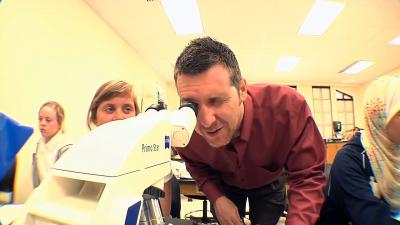Southern Miss Research Project Headed for International Space Station
Mon, 02/17/2014 - 10:08am | By: Van Arnold

University of Southern Mississippi Professor Scott Milroy is not ready to prove life exists on Mars. However, he is one giant leap closer to discovering whether or not a living organism could survive on the Red Planet.
Milroy recently learned that his NASA-funded “Pioneering Mars” project has been selected for payload integration and flight aboard the International Space Station. Milroy's project is one of only two chosen from the NASA ISS National Laboratory Education Project (NLEP) for transport to the ISS sometime in 2015.
“While USM is well-known regionally as a leader in STEM (science, technology, engineering and mathematics) education and research, it is important that the capabilities and accomplishments of our University reach a wider national audience,” said Milroy, associate professor of Marine Science at Southern Miss. “The results from our experiments, both on the ground and aboard the ISS, are designed to engage a new generation of young scientists and engineers as active research partners.”
Milroy and his colleagues await further federal funding to maintain the research protocol associated with the project. But he has already cleared one major hurdle in the quest to learn more about our solar system.
“The search for life beyond Earth is a fundamental question of the ‘uniqueness' of Earth in the cosmos,” said Milroy. “While the search for life on Mars has eluded us thus far, with our Pioneering Mars project, we intended to explore the possibility of extra-terrestrial life from a different perspective.
“Instead of looking for life which may have existed on Mars, we are investigating the possibility that Mars could support life, even if it is transported from Earth. The mere notion that an Earth organism could survive on the surface of Mars drives home the point that the Martian surface could sustain life.”
Milroy's project was one of five ISS NLEP projects nationwide that NASA funded approximately 18 months ago, providing hands-on science and engineering opportunities to high school students. His experiments focus on an attempt to grow a blue-green algae – known as cyanobacteria – in incubation chambers at the Southern Miss Gulf Park campus in Long Beach, Miss.
Milroy notes that while many of the physical, chemical, and climatic conditions of Mars can be simulated in an Earth-bound laboratory, the capability to maintain living cyanobacterial cultures in reduced gravity conditions can only be explored on the ISS.
Other potential benefits from the project include:
- Helping define the “edges” of habitability on Mars, which could help inform what sort of measurements should be taken in future missions to Mars.
- Determining what kinds of equipment/sensors should be developed in the search for life on Mars.
- Suggesting how future greenhouses should be built to maintain photosynthetic production, if Mars is to be colonized by human explorers in the future.
“The research is additionally valuable to NASA in that the successful culture of photosynthetic organisms in low-temperature, low-light, and reduced-gravity conditions would have far-reach implications for providing potential food sources, and renewable oxygen gas producers/carbon dioxide scrubbers for long-duration space flights,” said Milroy.
For more information about this project and the Department of Marine Science at Southern Miss, call 228.688.3177 or visit: http://www.usm.edu/marine and http://www.pioneeringmars.org


